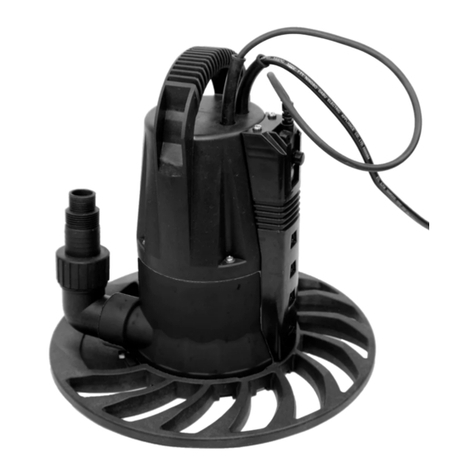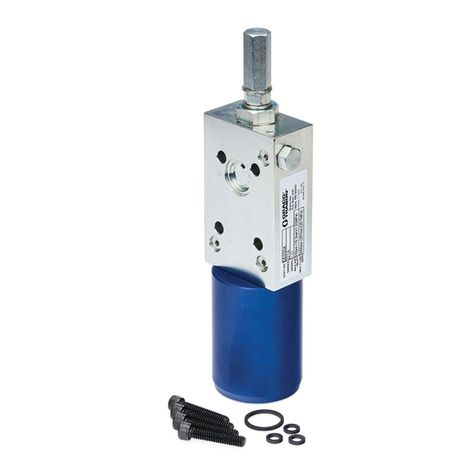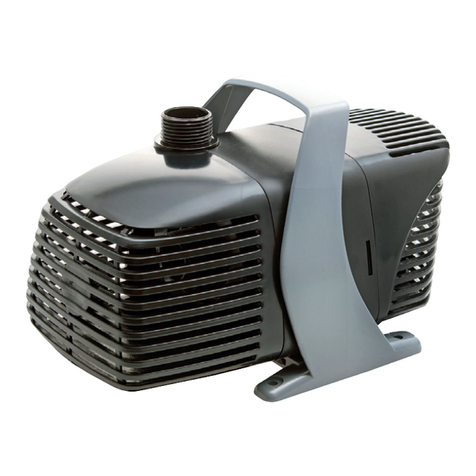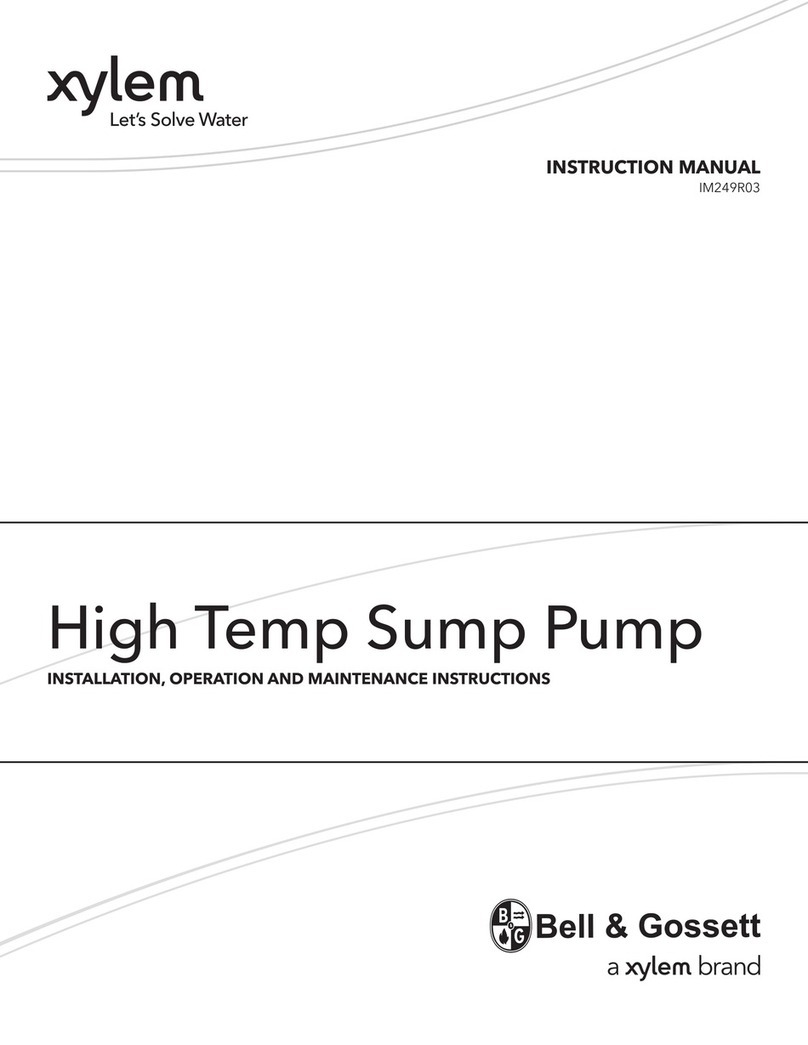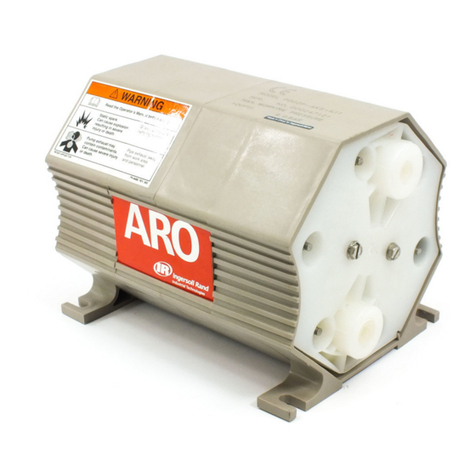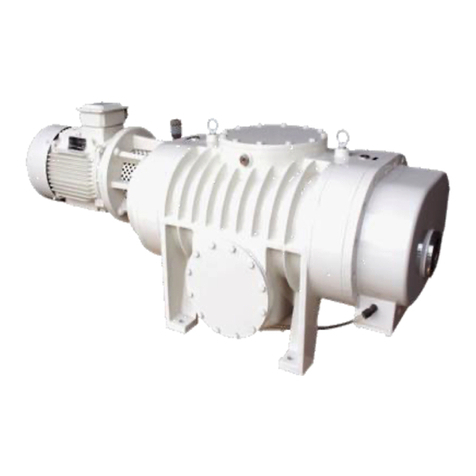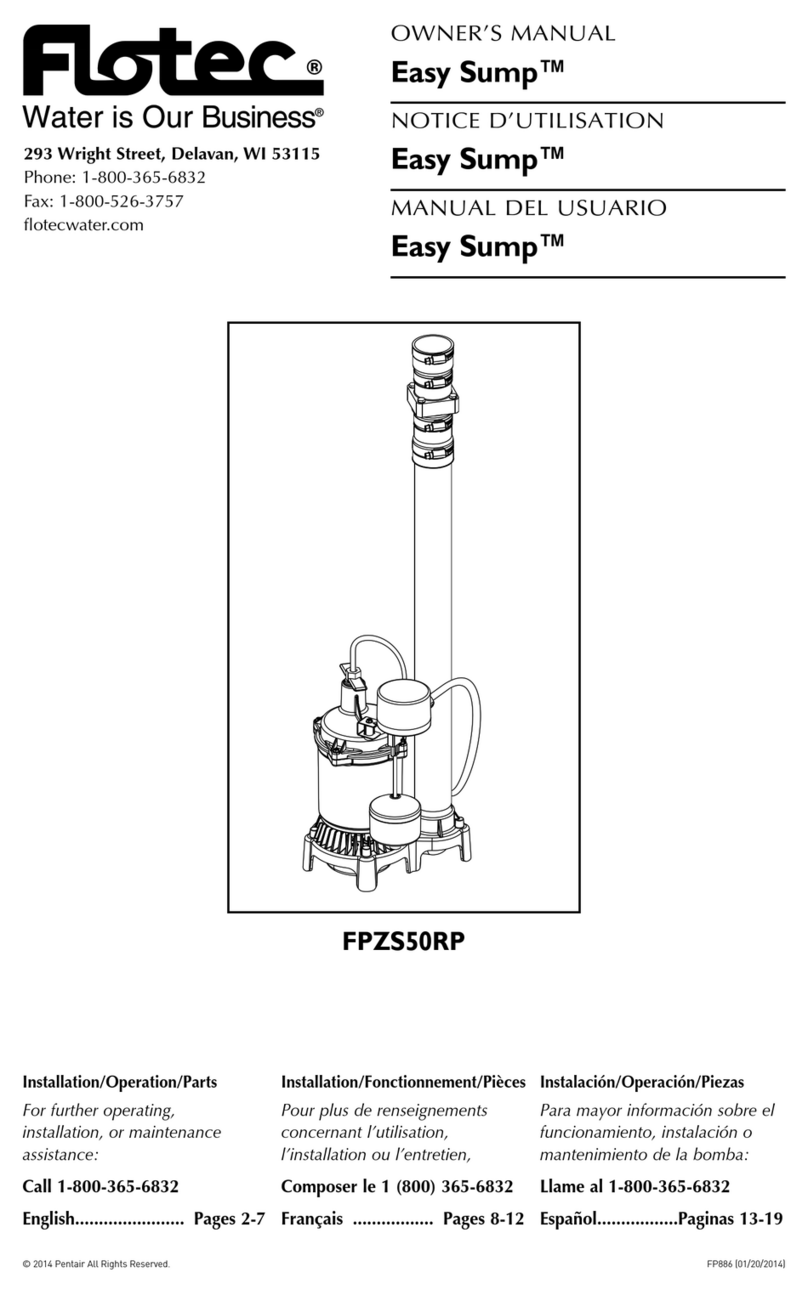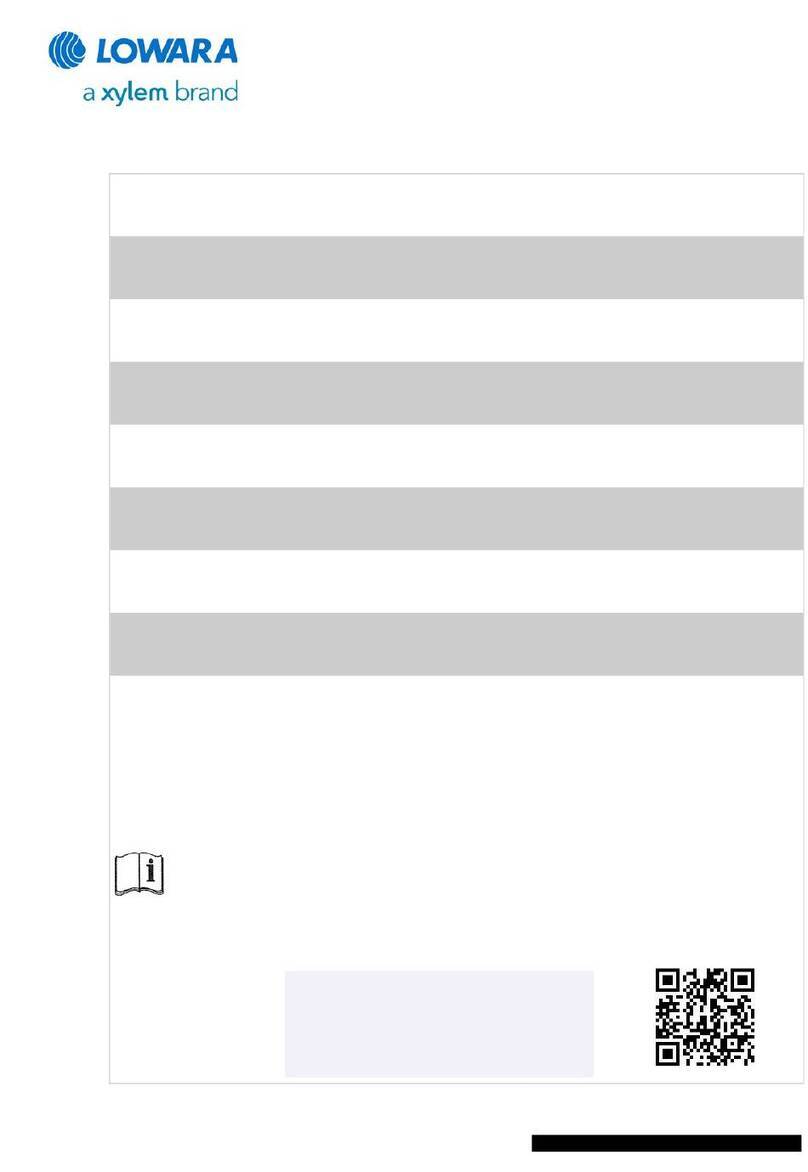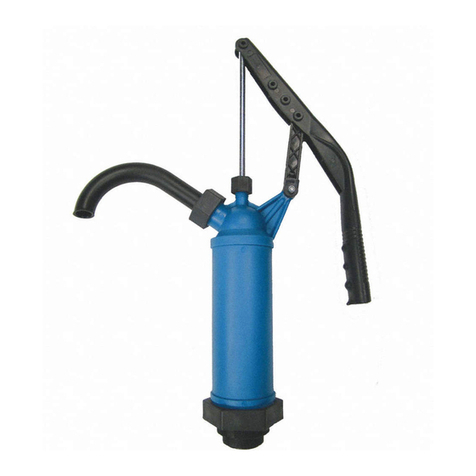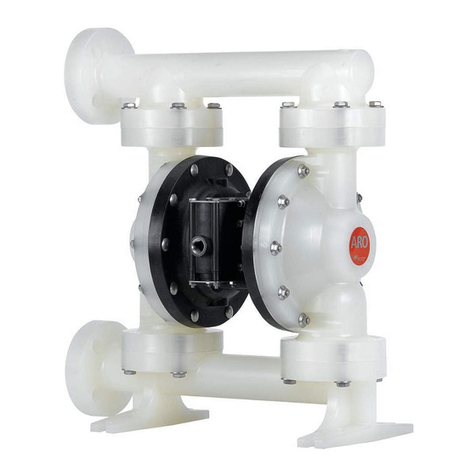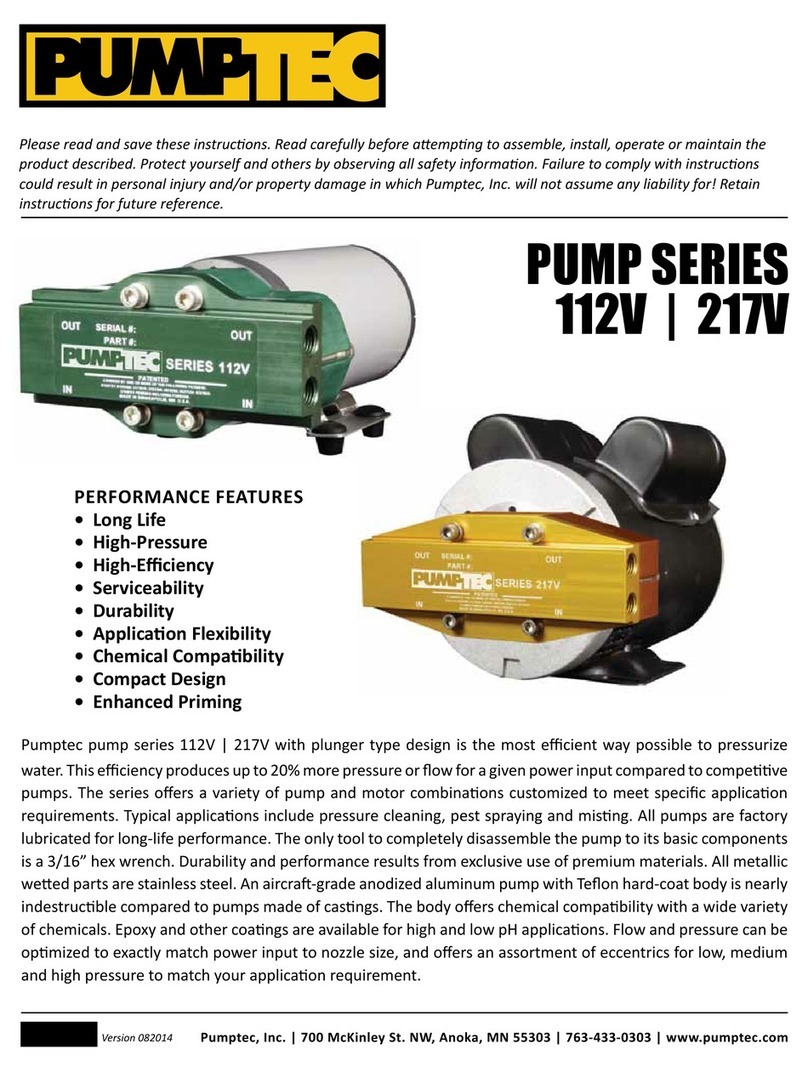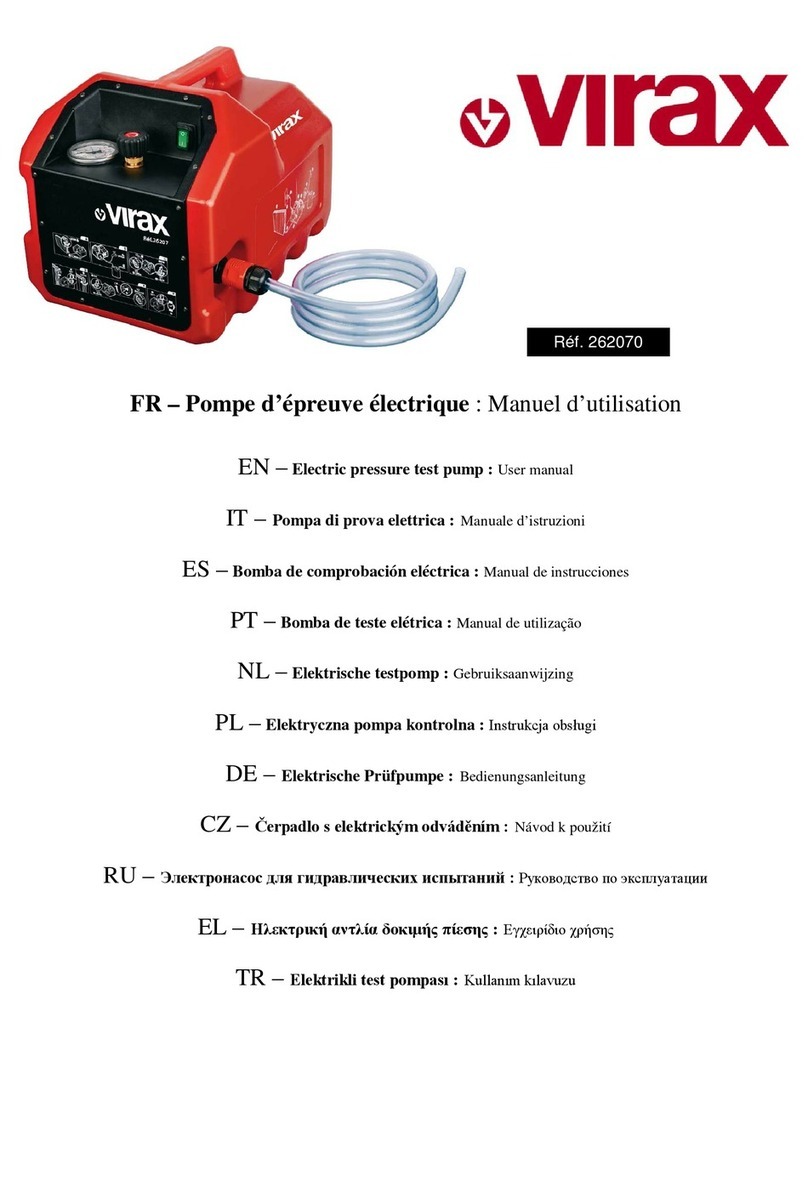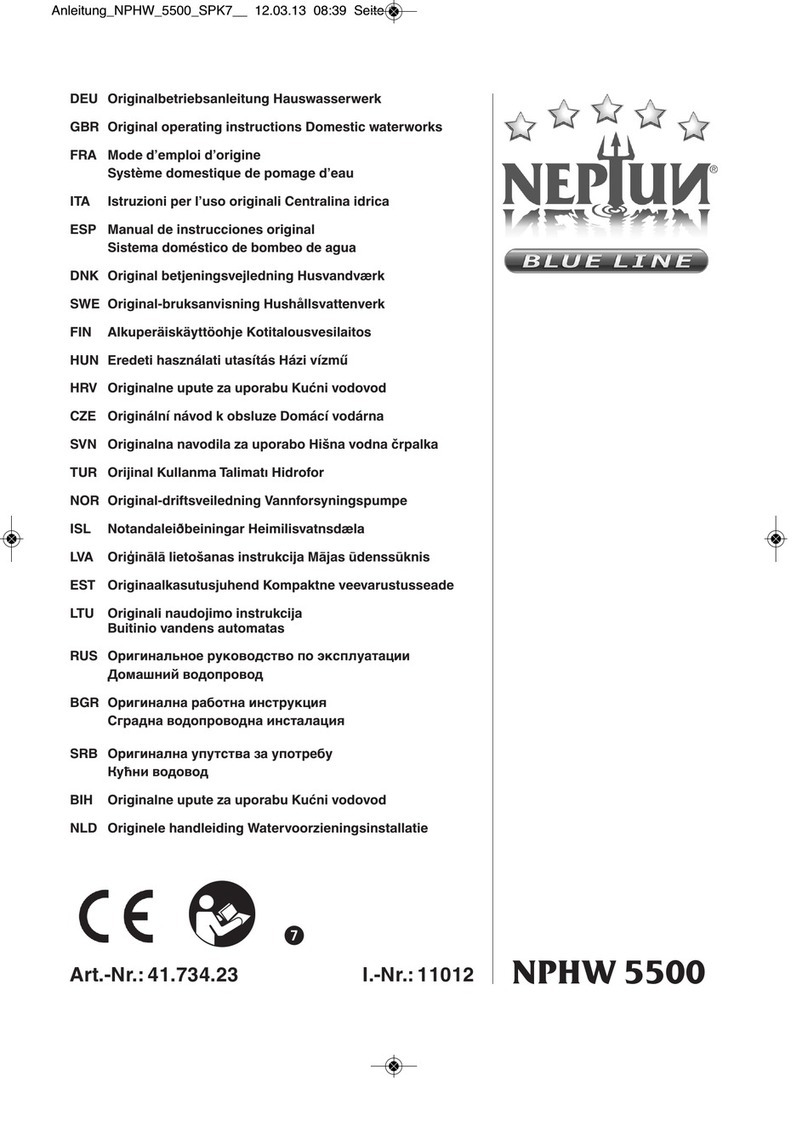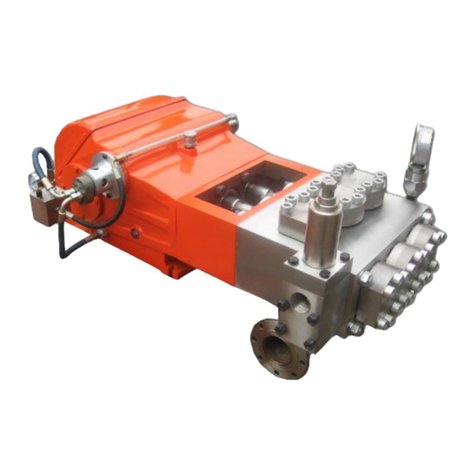
USE OF THE PUMP
Preparations and checks prior to starting
1. According to the running states, this series self-suction
pumps are lubricated with quality calcium-based grease
and 10# engine oil separately. For those lubricated with
grease, fill grease into the bearing box in a periodic time
and, for those with engine oil, fill it fully when the oil
level is insufficient.
2. Check if the stored liquid inside of the pump casing is
above the upper edge of the impeller and, if not, prime li-
quid directly from the filling port on the casing. Do not
start the pump in case of an insufficient stored liquid, or
the pump would not work normally and the mechanical
seal would be easily damaged.
3. Check if the moving parts of the pump are jammed or
collided; if the foot on the pump bottom and the nuts on
the joints are loose; check the concentricity or the para-
llelism between the shafts of both pump and motor; check
if there is air-leaking with the inlet pipeline and settle it if
any; open the valve on the suck-in pipeline and slightly
open (not fully) the outlet control valve.
Start and operation
1. Pay attention to the pump shaft to see if it moves in the
correct direction when to start the self-suction pump; and
if there is abnormal sounds and vibration when it moves.
2. Pay attention to the readings on both pressure gauge and
vacuum meter, when the indications of which get stable
after a periodic time fluctuation after the pump is started,
that means liquid has been primed into the pump and the
pump gets into the normal liquid transportation. Before
the pump gets into the normal liquid transportation, e.g.
During the self-suction process, pay special attention to
the temperature rise of the liquid and stop the pump to
check the cause if this process is too long and the tem-
perature is so caused too high.
3. Temporarily stop the pump in case of a difficult self-su-
ction caused due to too high liquid temperature and make
it lower by means of the back flow into the pump of the
liquid in the vomiting pipeline or supplementing liquid
directly from the filling port on the pump casing, then
start the pump again.
4. It is possible for an air erosion to occur with the pump
that causes a severe vibration and noise during the work
of the pump and the air erosion occurs with two causes:
one is too quick flow rate in the inlet pipe and the other
is too high suction travel. For the former, adjust the out-
let control valve, raise the reading on the pressure gauge
and remove it in case of block-up in the inlet pipeline; for
the latter, properly lower the pump's installation height.
1
10
2
3
()
1
2
3
4
07
ZW SELF-PRIMING PUMP
